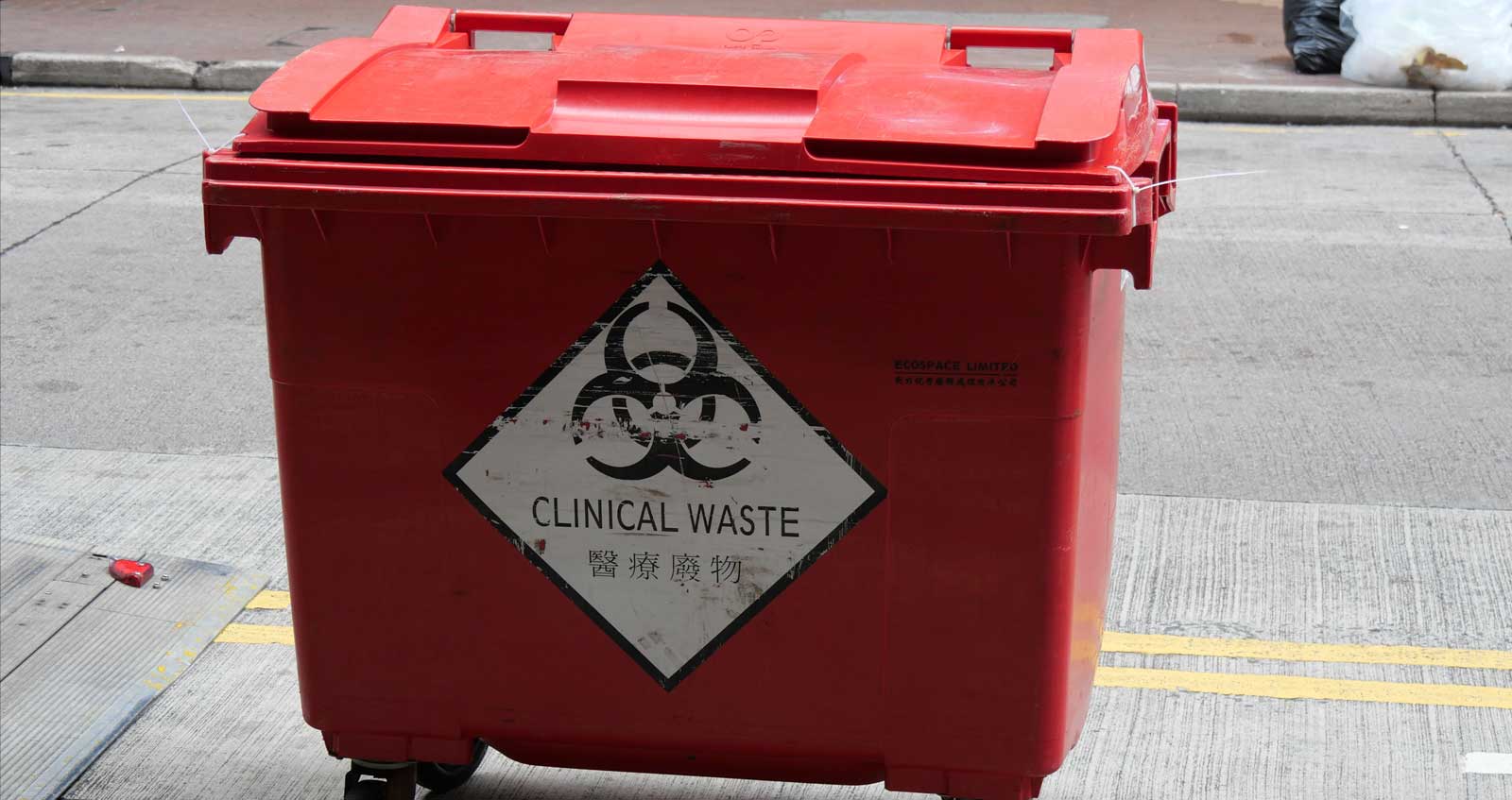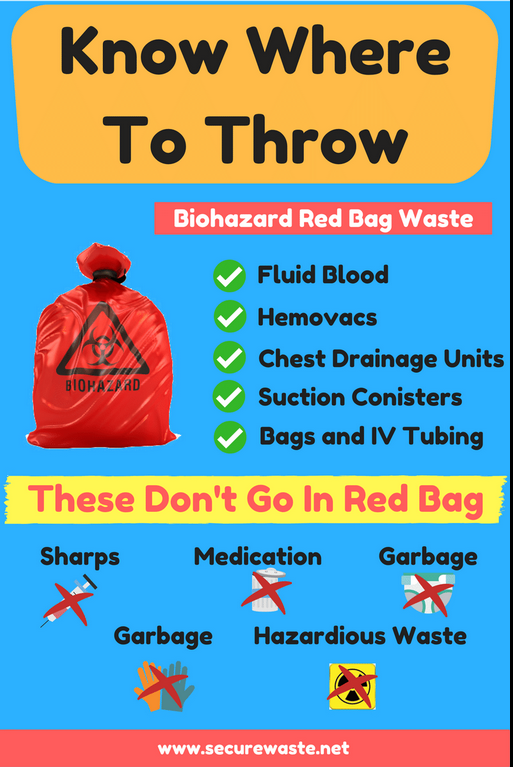Defending Wellness: Unveiling the Significance of Professional Medical Waste Removal
Defending Wellness: Unveiling the Significance of Professional Medical Waste Removal
Blog Article
Keep Ahead of Laws: Specialist Advice on Medical Waste Disposal
In a globe where the health care industry is regularly advancing, it is imperative for medical centers to stay ahead of guidelines when it comes to the appropriate disposal of medical waste. With rigorous standards and regular regulative changes, it can be testing to navigate the complexities of this process. With skilled recommendations, centers can make certain conformity and alleviate dangers connected with inappropriate waste disposal. From understanding the different classifications of clinical waste to applying the right collection and partition techniques, this discussion will certainly give actionable pointers and important insights to aid centers remain ahead of guidelines in the ever-changing landscape of medical garbage disposal.
Understanding Medical Waste Categories
Recognizing medical waste categories is crucial for proper disposal and management in health care facilities. Clinical waste describes any kind of waste produced by medical care activities that may position a danger to public wellness or the environment. It is vital to classify clinical waste precisely to ensure its secure handling, treatment, transportation, and disposal.
There are a number of classifications of medical waste that healthcare centers require to be familiar with. One of the most common groups include transmittable waste, pathological waste, sharps waste, pharmaceutical waste, and chemical waste. Each classification has particular guidelines and guidelines for its proper management and disposal.
Pathological waste refers to human cells, body organs, or body components that need unique handling and disposal. Drug waste makes up run out, extra, or polluted medicines that require careful handling and disposal.
Remaining Up-To-Date With Regulatory Adjustments
Staying existing with regulative modifications is critical for healthcare facilities to make certain conformity and proper administration of medical garbage disposal. medical waste removal services. With guidelines continuously advancing, it is essential for healthcare facilities to remain up-to-date to avoid charges, penalties, and potential damage to the setting and public health and wellness
To remain ahead of regulatory changes, health care facilities must develop a system for monitoring and monitoring updates. This can be done by registering for regulative e-newsletters, attending workshops and meetings, and actively joining sector associations. Furthermore, facilities ought to assign a team member or team in charge of remaining educated and sharing info to appropriate stakeholders.
Regular interaction with governing firms is also crucial. Health care centers need to develop relationships with neighborhood, state, and federal agencies to ensure they understand any kind of changes in laws that might affect their waste monitoring techniques. This can be done with routine conferences, involvement in public comment periods, and proactive engagement with governing companies.
Furthermore, medical care centers must consider partnering with waste management business that specialize in medical garbage disposal (medical waste disposal services with WasteX). These business are usually fluent in the most up to date guidelines and can offer advice and support to ensure compliance
Carrying Out Appropriate Collection and Segregation Techniques
To successfully handle clinical garbage disposal, health care centers should establish proper collection and partition methods based on governing standards. Executing these approaches makes sure the safe handling and disposal of possibly hazardous products, shields the atmosphere, and reduces the risk of infections and injuries to health care workers and the basic public.
Proper collection and partition methods entail making use of assigned containers and classifying systems. Health care facilities ought to offer plainly identified containers for different kinds of clinical waste, such as sharps, infectious waste, pharmaceutical waste, and non-hazardous waste. These containers need to be color-coded and plainly significant to stay clear of confusion and advertise easy recognition.
Additionally, health care facilities ought to train their staff on the appropriate procedures for accumulating and setting apart medical waste. This includes informing them on the different sorts of waste, the proper containers to utilize, and the importance of following standards and policies. Routine training sessions and refresher course courses need to be performed to ensure that employee continue to be updated on best practices.
Furthermore, medical care centers should establish a system for routine collection and disposal of medical waste. This may entail partnering with certified waste management companies that specialize in clinical waste disposal. These firms will make sure that the accumulated waste is transferred and gotten rid of in conformity with regulatory requirements.
Selecting the Right Disposal Approaches

Incineration is among the most typical and efficient methods for throwing away certain sorts of medical medical waste disposal services with WasteX waste, such as pathological waste and sharps. It entails the controlled burning of waste at high temperature levels, lowering it to ash. Incineration can launch damaging toxins into the air and contribute to air pollution.

Various other disposal techniques include chemical therapy, microwave treatment, and landfilling. Chemical therapy entails using chemicals to counteract the waste and sanitize. Microwave therapy uses microwave power to warm and disinfect the waste. Landfilling involves burying the waste in an assigned landfill area (medical waste disposal services with WasteX). Landfilling should be the last resort due to the prospective risk of contamination to dirt and groundwater.
Making Certain Compliance Via Paperwork and Training
After thoroughly thinking about the proper disposal techniques for medical waste, medical care centers have to guarantee compliance with policies and reduce ecological effect by executing reliable paperwork and training treatments. This action is important in preserving a risk-free and sustainable atmosphere for both health care employees and the general public.

Health care workers that deal with medical waste needs to obtain proper training on waste partition, taking care of, and disposal treatments. By offering extensive training, healthcare centers can encourage their personnel to make informed choices and reduce the danger of incorrect waste disposal.
Final Thought
In final thought, staying in advance of guidelines in clinical waste disposal is vital for healthcare facilities. medical waste removal services. Recognizing the different classifications of clinical waste, remaining upgraded with governing modifications, implementing appropriate collection and segregation techniques, choosing the ideal disposal approaches, and making sure compliance through documentation and training are all important actions. By complying with these standards, healthcare companies can efficiently manage and get rid of of clinical waste in a accountable and risk-free manner
From understanding the various classifications of clinical waste to executing the appropriate collection and partition techniques, this conversation will supply workable pointers and important insights to assist centers stay ahead of laws in the ever-changing landscape of clinical waste disposal. - medical waste disposal services with WasteX
The most typical categories consist of infectious waste, pathological waste, sharps waste, pharmaceutical waste, and chemical waste. Medical care facilities must provide clearly labeled containers for various types of clinical waste, such as sharps, contagious waste, pharmaceutical waste, and non-hazardous waste. Healthcare facilities need to develop a detailed system to tape-record and track all facets of medical waste disposal, consisting internet of kinds of waste generated, quantities, and disposal methods utilized. Health care workers who manage clinical waste should obtain ideal training on waste partition, taking care of, and disposal procedures.
Report this page